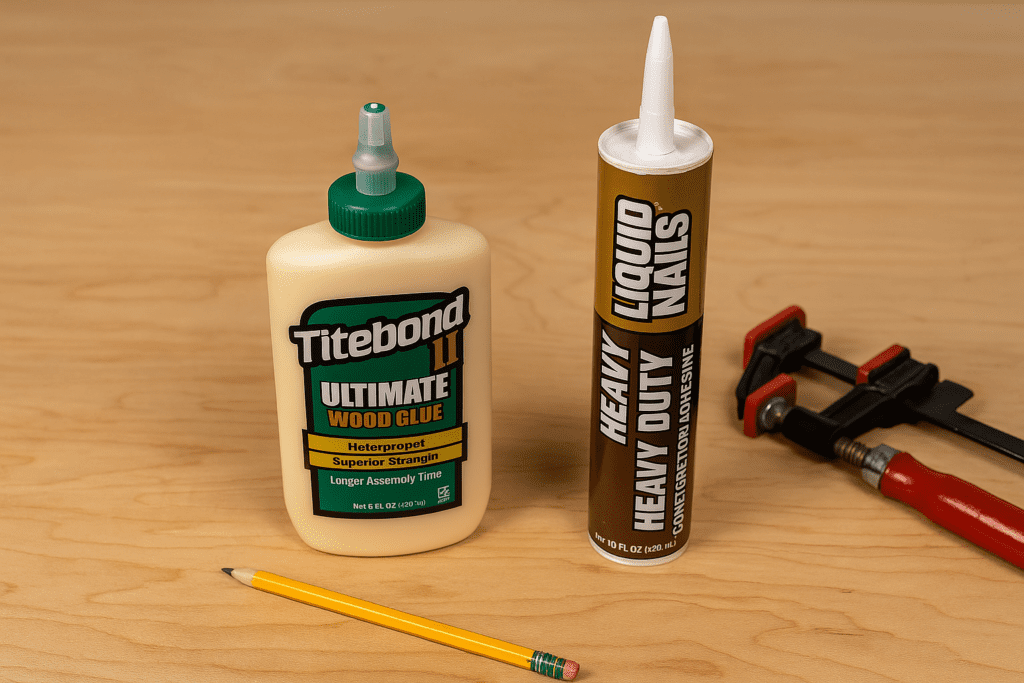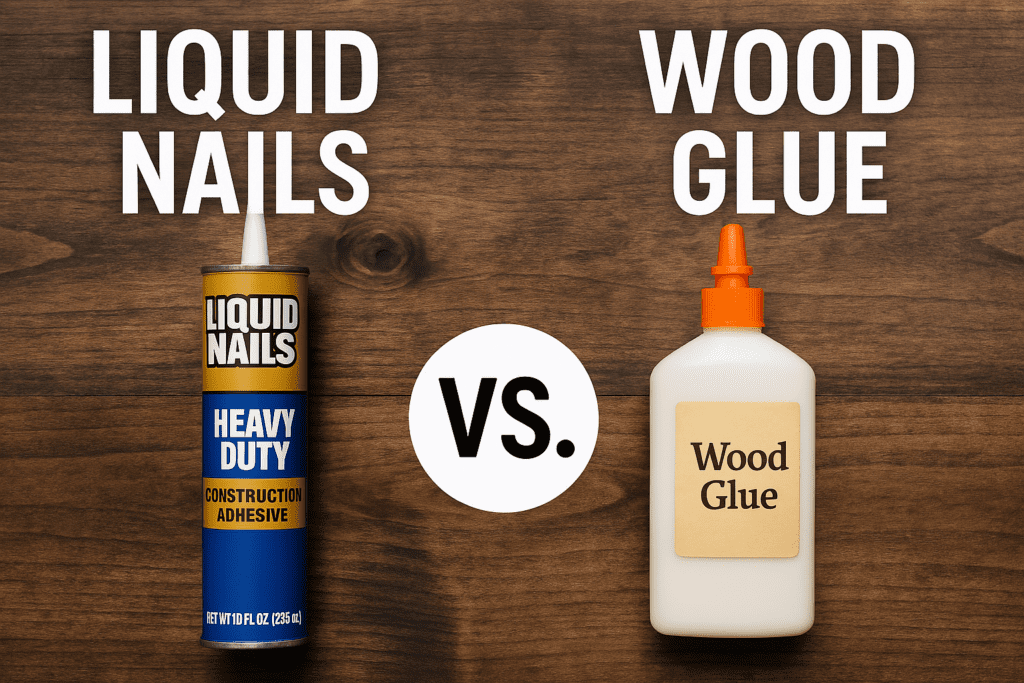
Let’s be real—glue only matters when something falls apart. That’s when you start asking: Did I use the wrong stuff?
I’ve been through that a few too many times. Over the years, I’ve figured out exactly when to use wood glue and when to grab the Liquid Nails tube. They’re both solid, but they’re made for different kinds of jobs. Trying to use one for the other usually ends in regret (and sanding).
What’s the Real Difference?

It’s simple:
- Wood glue is for tight wood-to-wood joints.
- Liquid Nails is for gaps, odd surfaces, and rough installs.
One soaks in and bonds the grain. The other grabs onto whatever you smear it on.
When I Grab Wood Glue
Anytime I’m doing real woodworking—drawers, furniture, shop jigs—I’m using wood glue. If it fits tight and I can clamp it, glue wins every time. It’s cleaner, dries stronger, and doesn’t stink up the place.
When I use it:
- Furniture joints
- Face frames
- Cabinets
- Anywhere I can get clamps on and everything lines up
👉 Titebond III is the bottle I’ve kept in the shop for years. It’s waterproof, strong as nails, and doesn’t get gummy like cheap stuff.
When I Use Liquid Nails
If I’m on a job site, Liquid Nails is almost always nearby. It’s the fix for everything that doesn’t fit perfect. I’ve used it for paneling, trim, even sticking foam board to studs. It saves time and holds surprisingly well.
When I use it:
- Wall panels
- Subfloors
- Attaching wood to concrete or drywall
- Anything outdoors with a little give
👉 Liquid Nails HD (LN-903) is my go-to. It sets quick and grabs strong—plus it doesn’t quit when temps drop.
Which One’s Stronger?
Depends on the job. I’ve seen wood glue outlast the wood around it—especially on a good fit. But I’ve also seen Liquid Nails hold stuff together that really had no business sticking.
If the joint’s tight and clean, glue’s unbeatable.
If it’s rough or mismatched? Liquid Nails is the better call.
Dry Time & Patience (What Actually Happens)
| Thing | Wood Glue | Liquid Nails |
|---|---|---|
| Working time | ~10 mins | ~15 mins |
| Clamp time | 30–60 mins | Usually not needed |
| Full cure | ~24 hrs | ~7 days |
Glue needs clamps, always. Liquid Nails? I’ll nail it in place and let it sit.
Outdoor Use? Yep—With the Right Stuff
I’ve built picnic tables, planter boxes, and installed outdoor trim using both. You just have to use the right versions.
- Titebond III is made for outdoor stuff—it holds up to rain and sun.
- Liquid Nails Extreme is what I use on siding, concrete, and cold-weather installs.
✅ Titebond III Ultimate
✅ Liquid Nails Extreme HD (LN-907)
Things I’ve Learned the Hard Way
- Wood glue wipes off easy. Liquid Nails? Not so much.
- Cheap construction adhesive is worthless. Don’t buy the $2 tube.
- If you’re indoors and want zero smell—go with glue.
- Don’t store either in a hot truck or freezing shed. Ever.
What I Use for What
| Project | My Pick |
|---|---|
| Cutting boards | Titebond III |
| Trim over drywall | Liquid Nails |
| Outdoor bench | Titebond III |
| Wood to foam or brick | Liquid Nails |
| Subfloor repair | Liquid Nails |
| Shop jigs | Wood glue |
Final Word
Look, both are great. But don’t treat them like they’re the same thing. One’s made for precision and fit. The other is made for grip and speed.
Use them like tools. Because that’s what they are.




